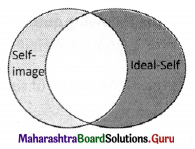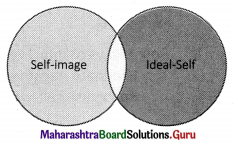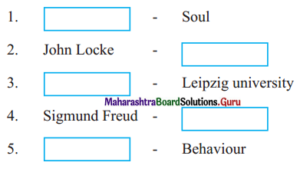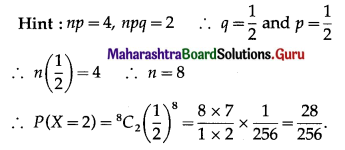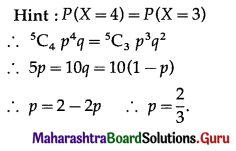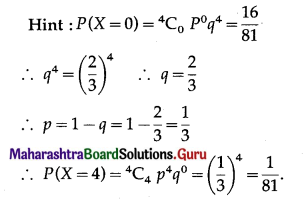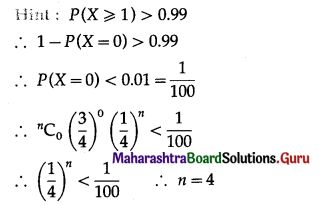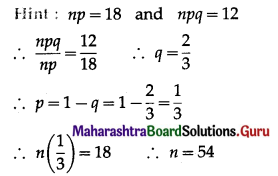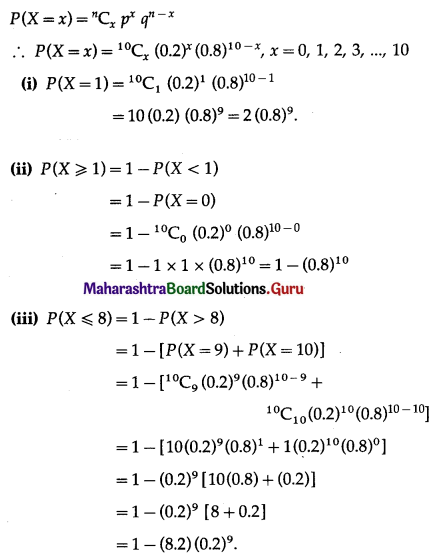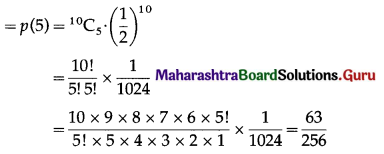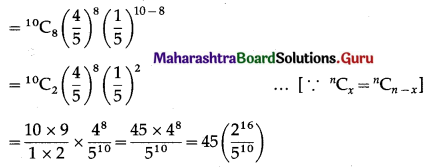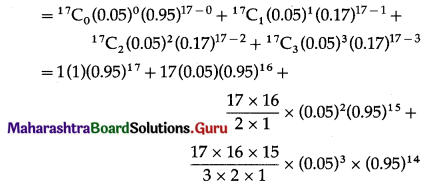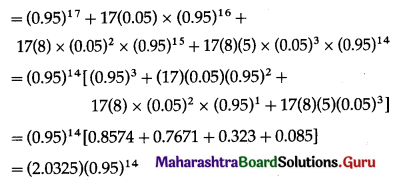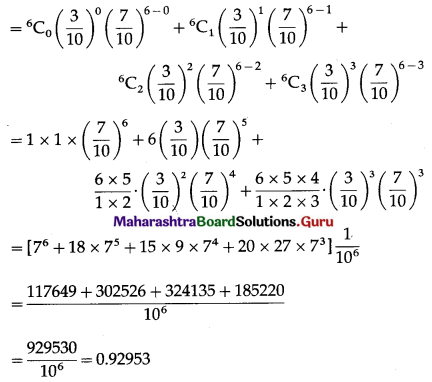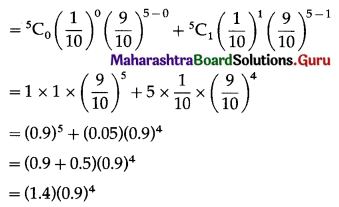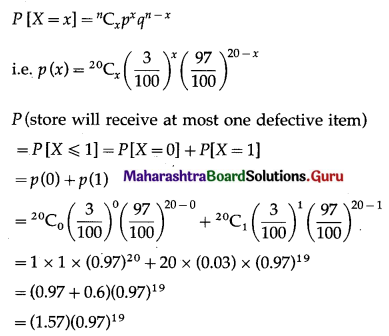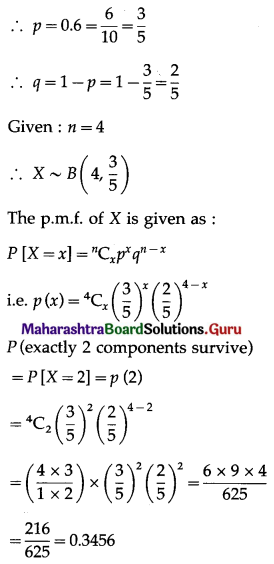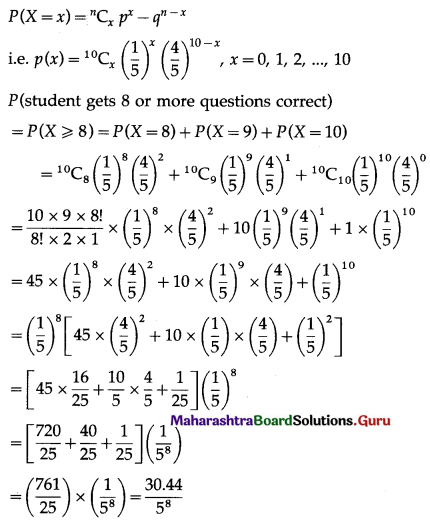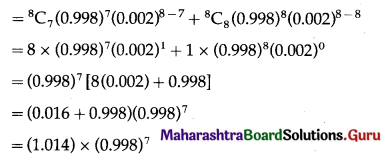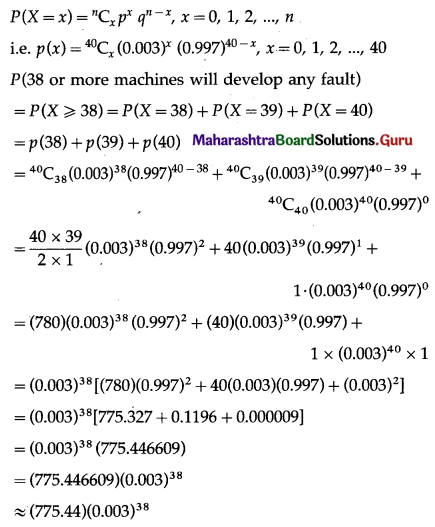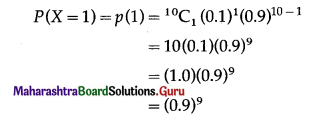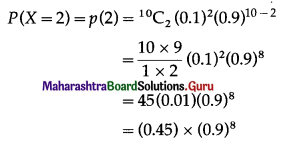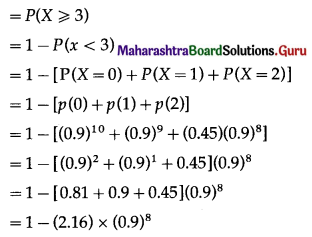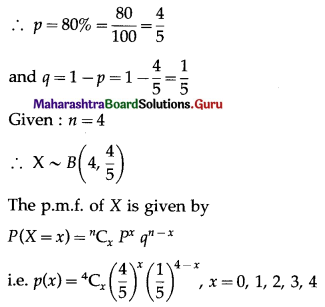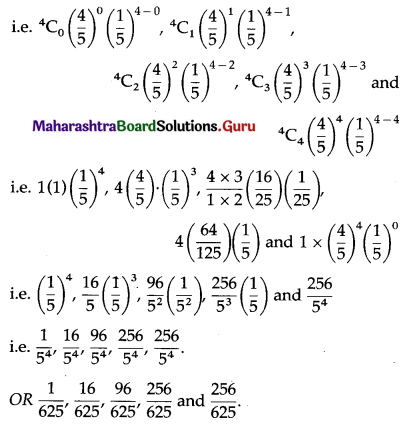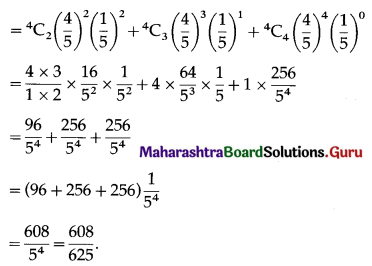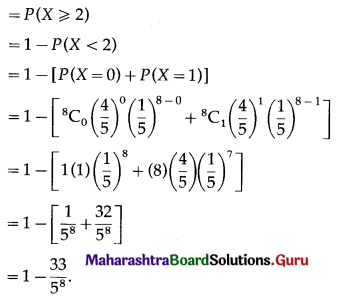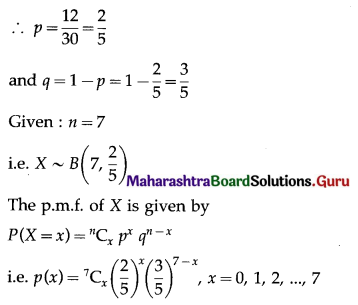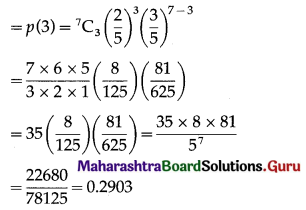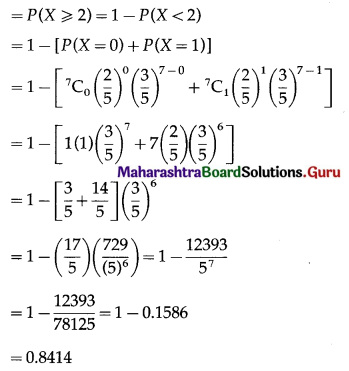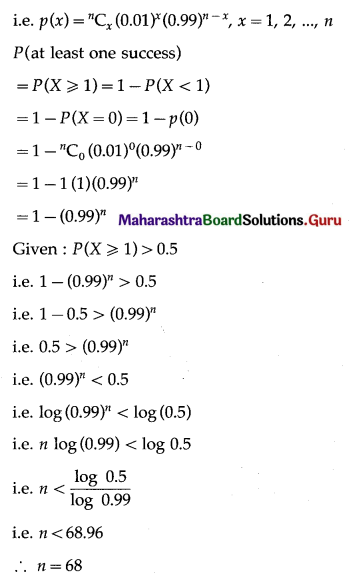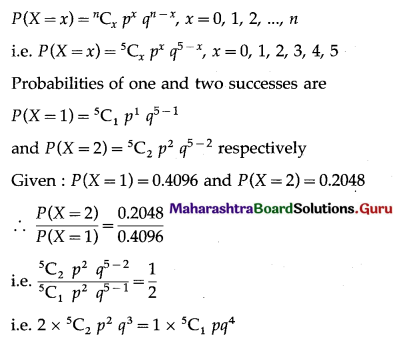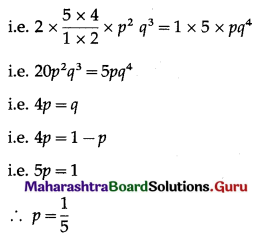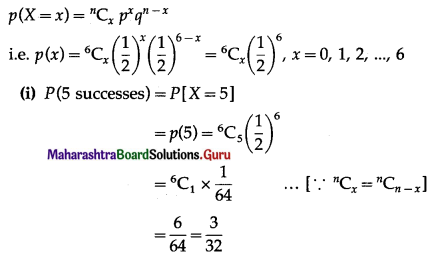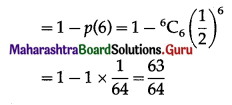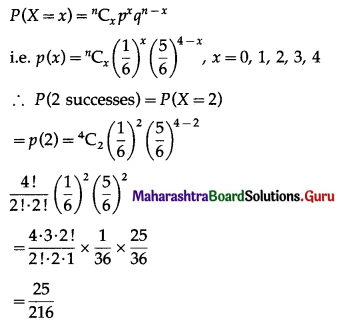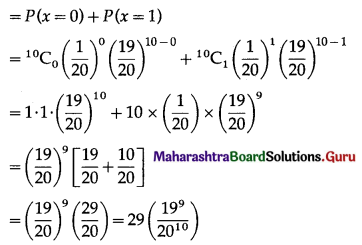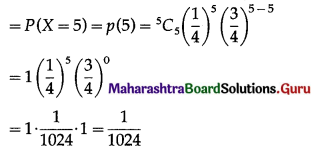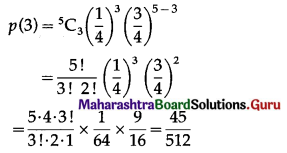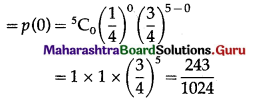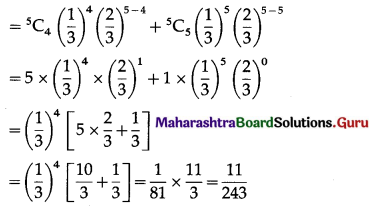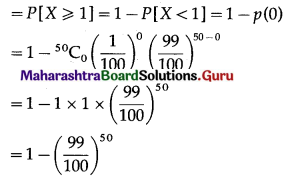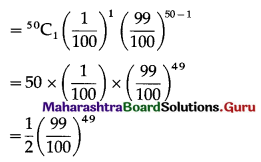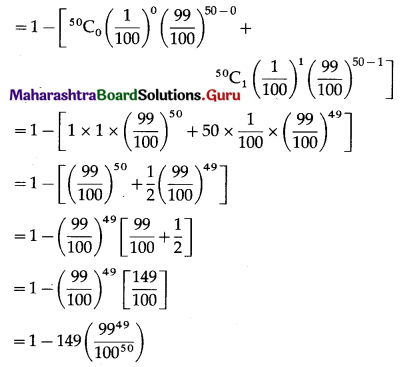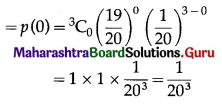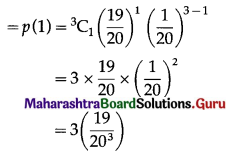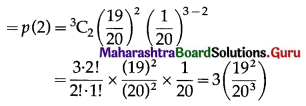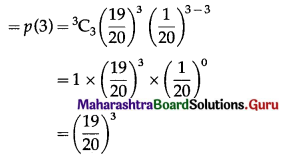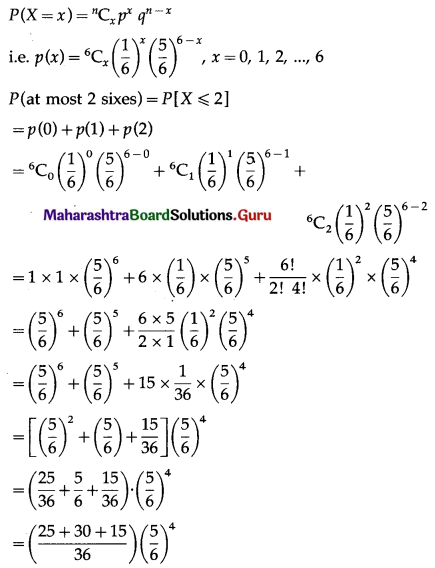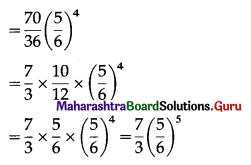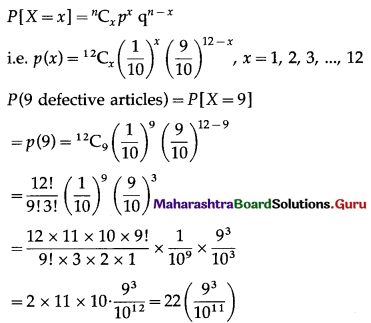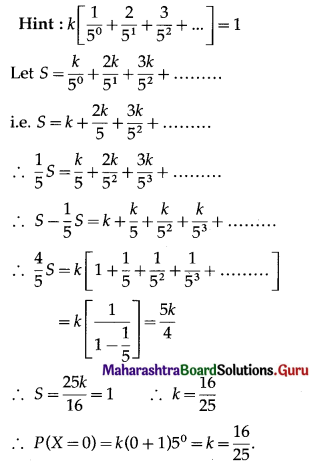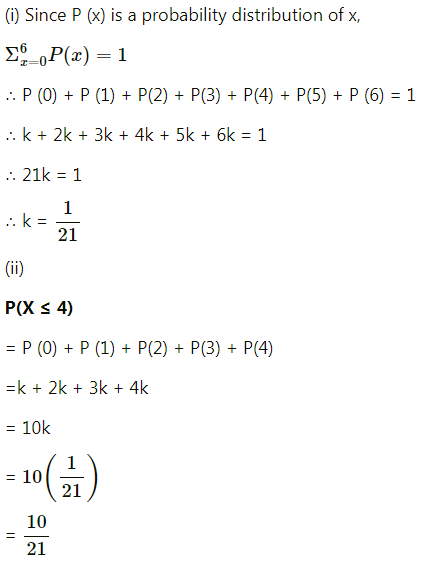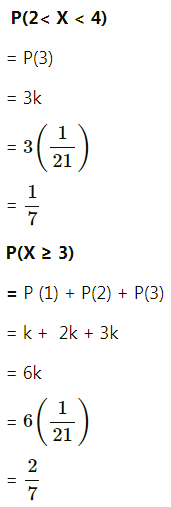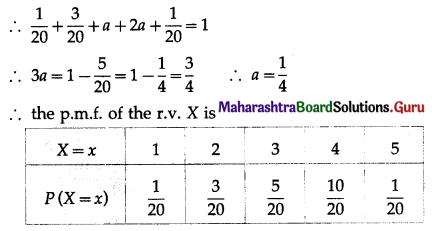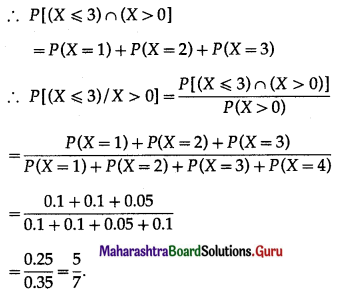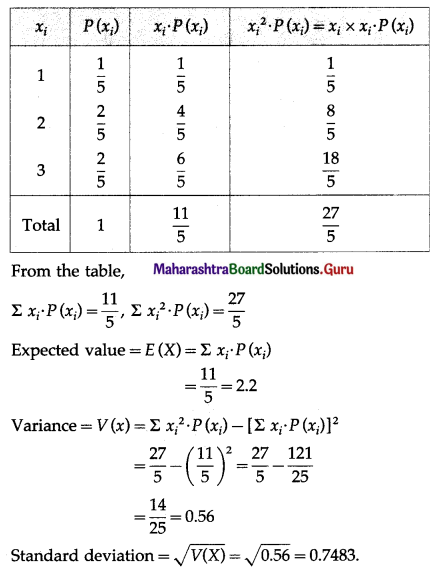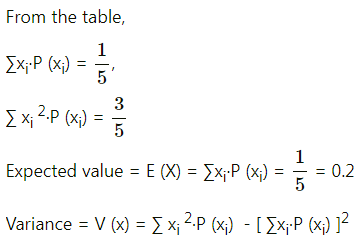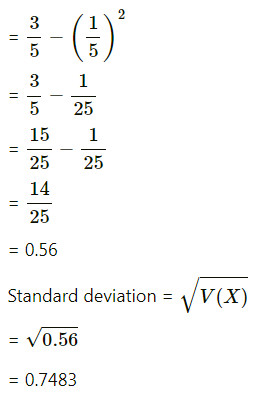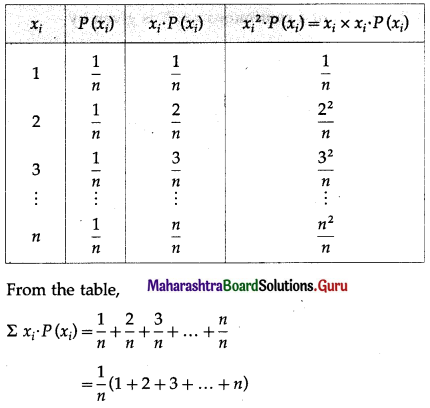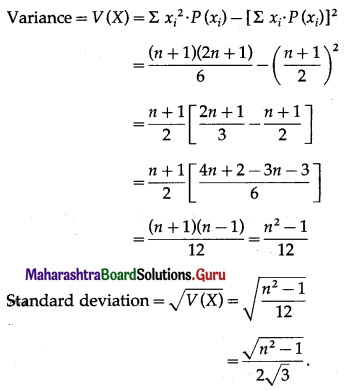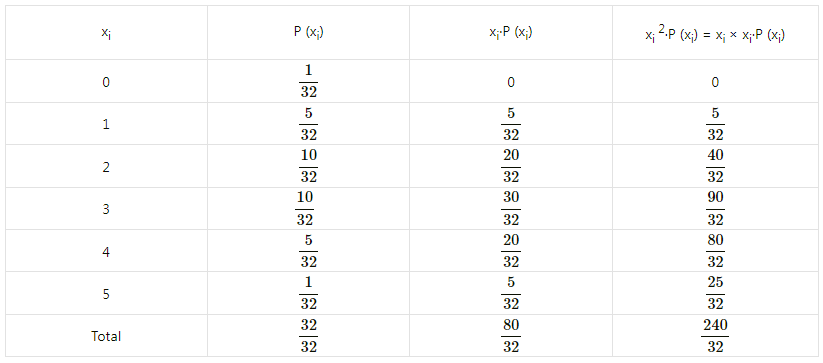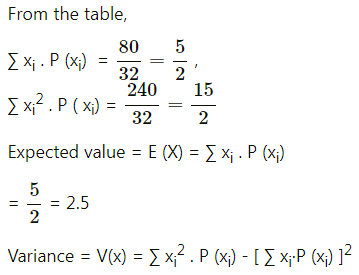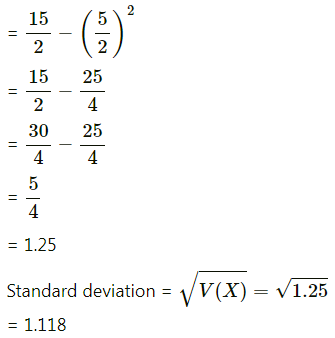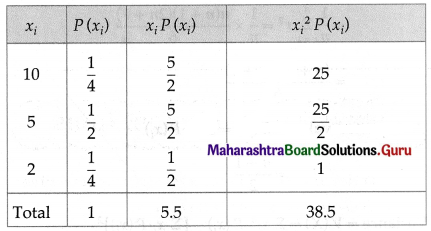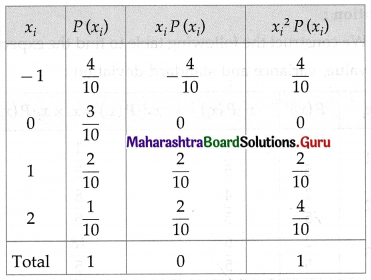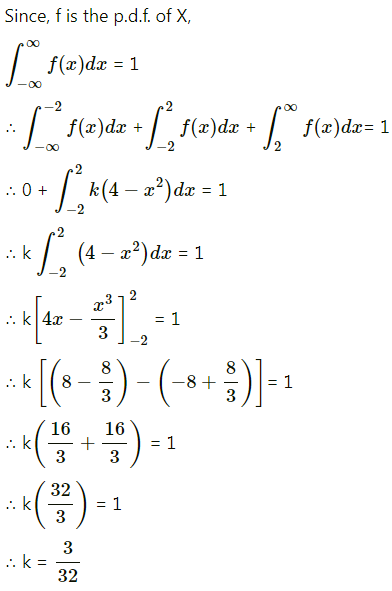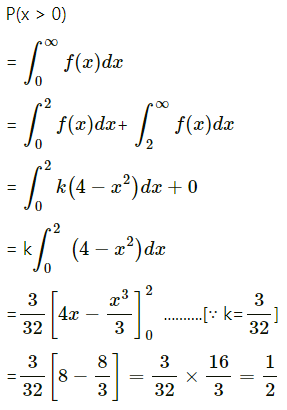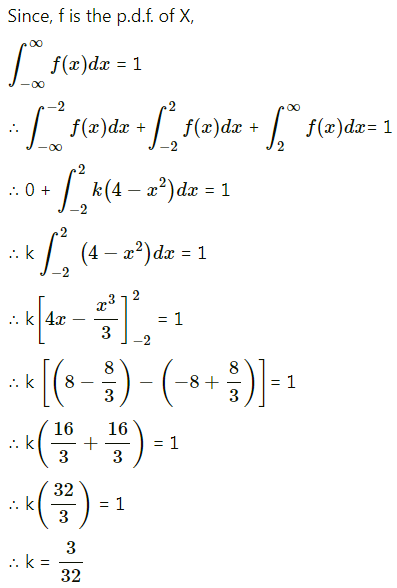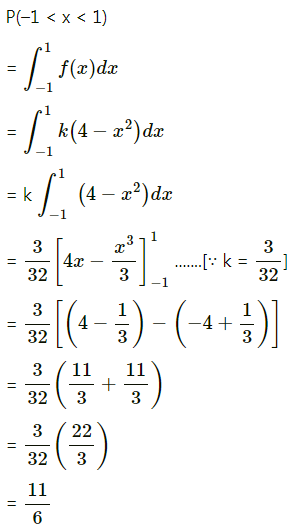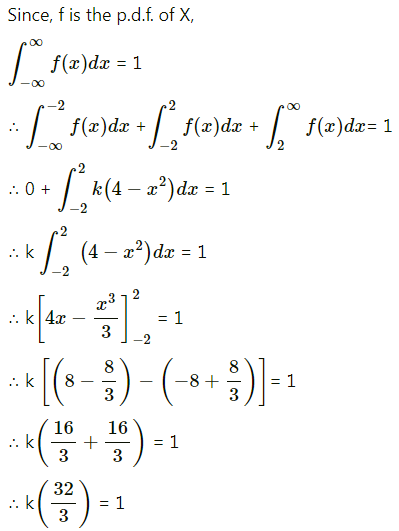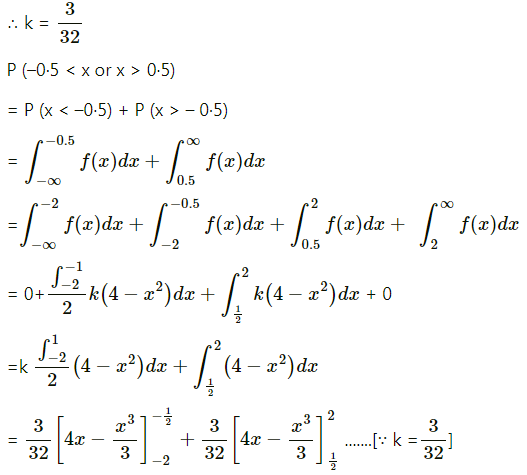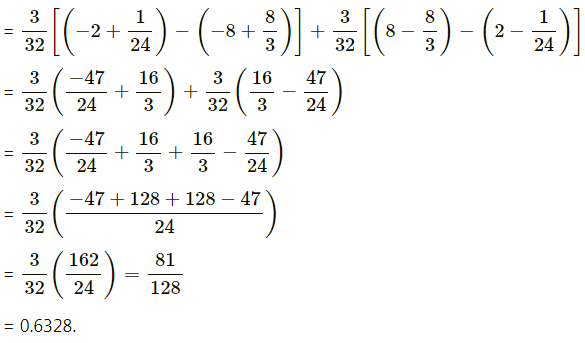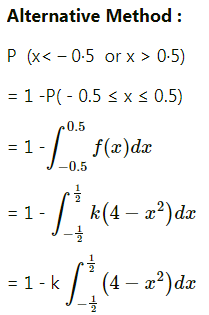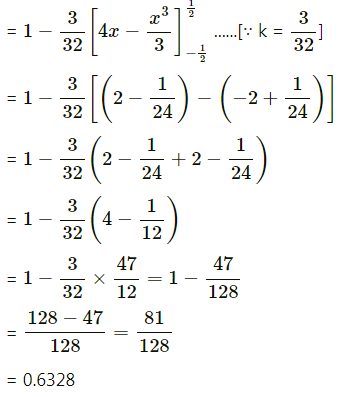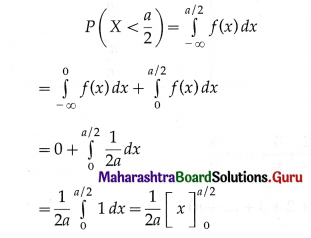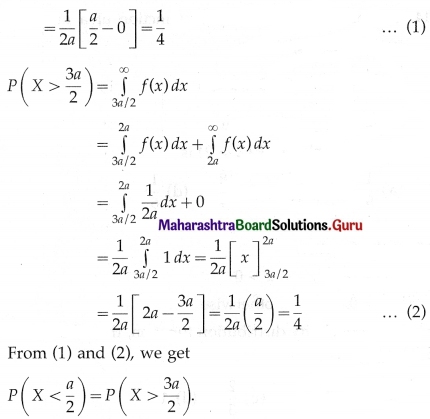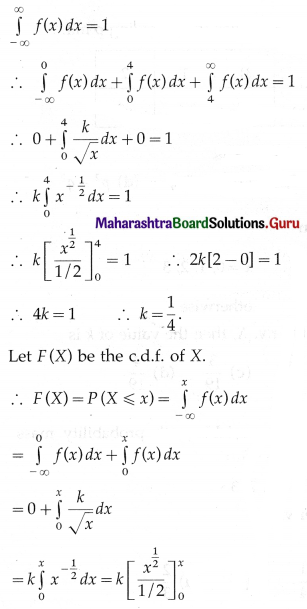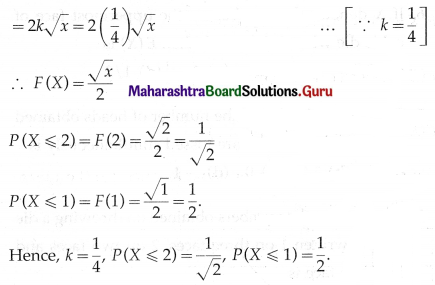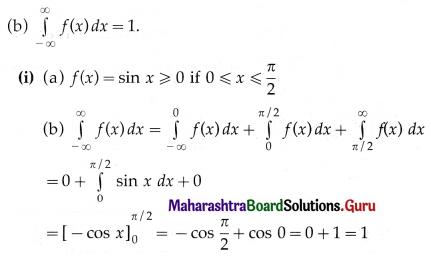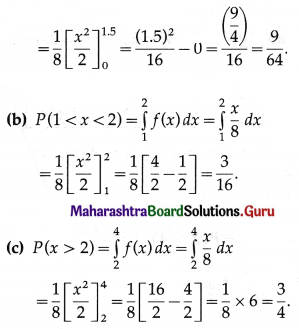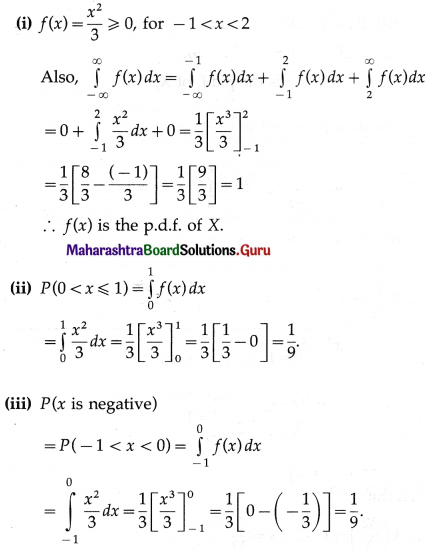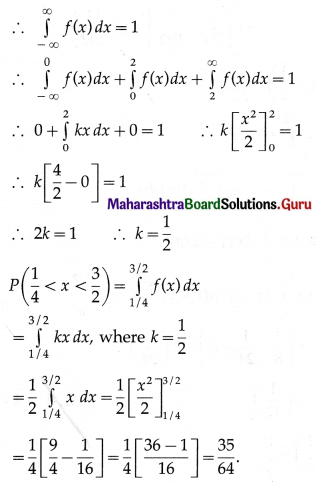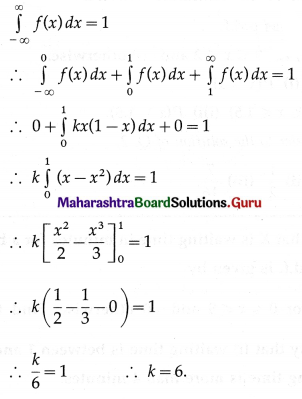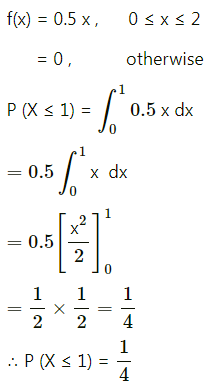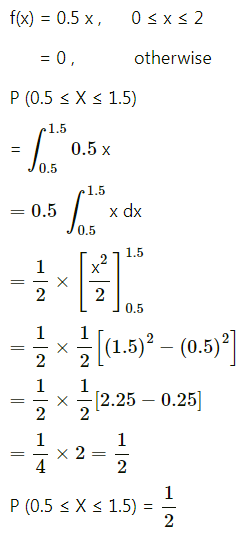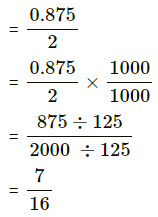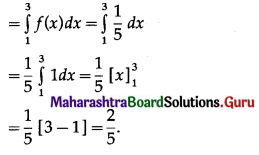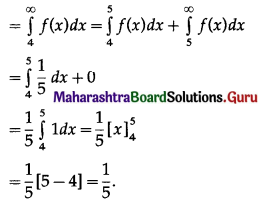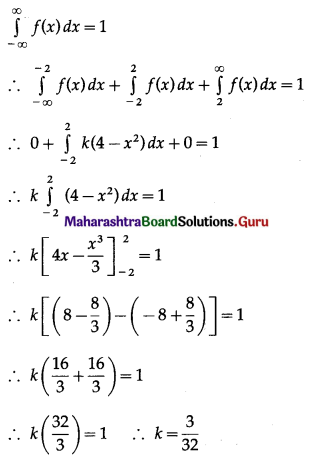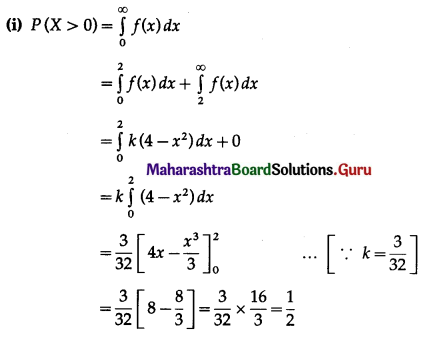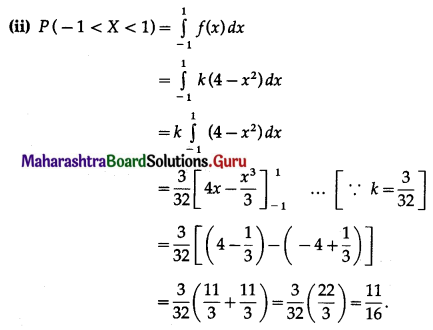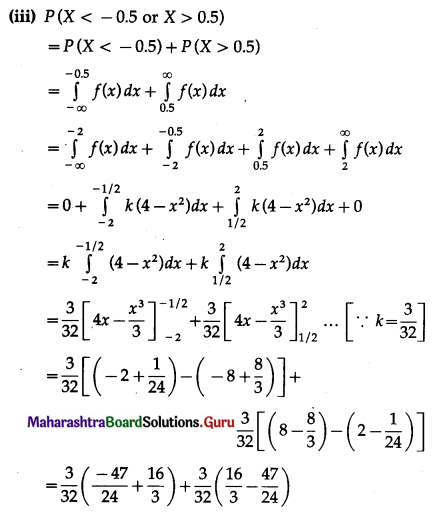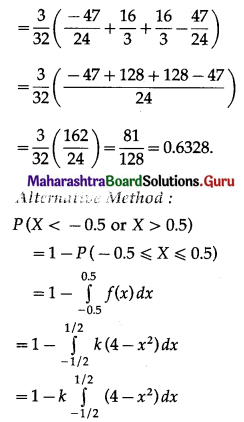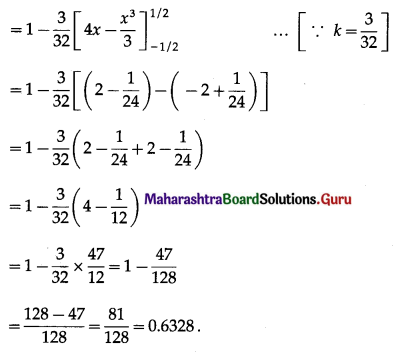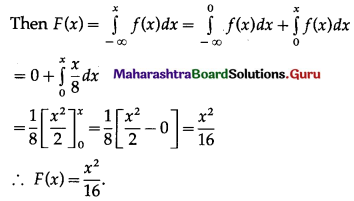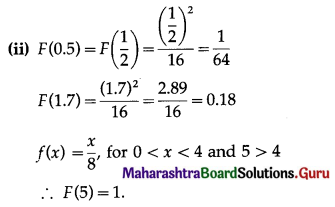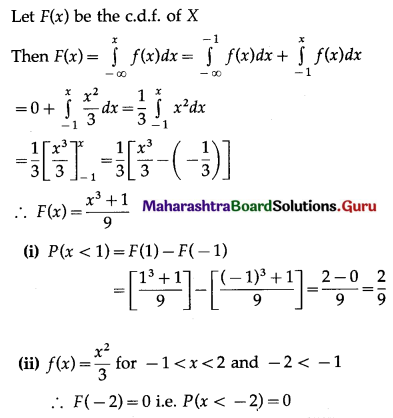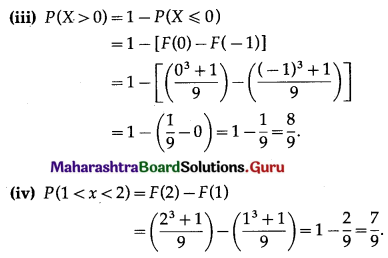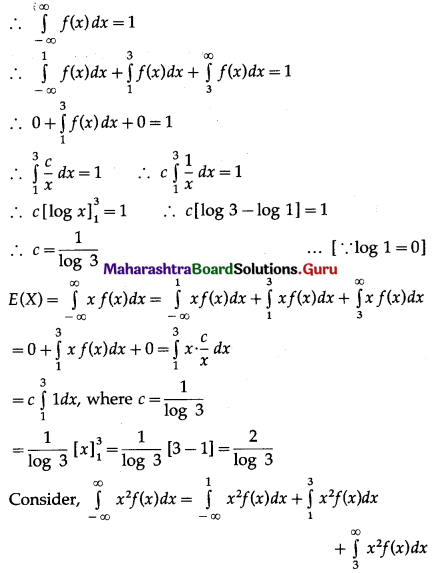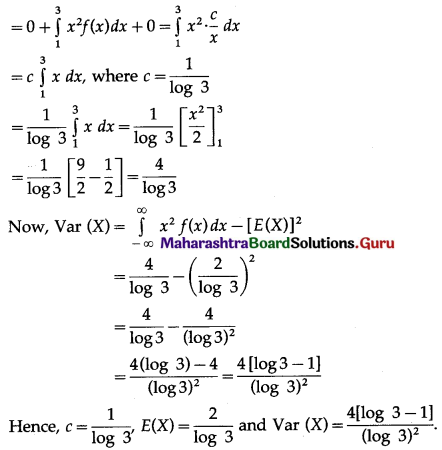Psychology Class 11 Chapter 6 Stress Question Answers Maharashtra Board
Balbharti Maharashtra State Board Class 11 Psychology Solutions Chapter 6 Stress Textbook Exercise Questions and Answers.
Stress Class 11 Psychology Chapter 6 Questions and Answers
1A. Complete the following statements.
Question 1.
When the demand of a situation exceeds personal and social resources an individual can mobilise, it leads to __________
a. worries
b. stress
c. depression
Answer:
b. stress
Question 2.
__________ leads to boredom.
a. Eustress
b. Hypo stress
c. Distress
Answer:
b. Hypo stress
![]()
Question 3.
__________ is necessary for better performance.
a. High stress
b. Moderate stress
c. Low stress
Answer:
b. Moderate stress
Question 4.
Low level of intelligence may act as __________ stressor while facing a difficult exam.
a. internal
b. external
c. imposed
Answer:
a. internal
Question 5.
__________ results when a goal-directed activity is blocked by some obstacle.
a. Frustration
b. Anger
c. Conflict
Answer:
a. Frustration
1B. State whether the following statements are true or false. If false, correct them, If true, explain why.
Question 1.
Well-adjusted person does not experience stress at all.
Answer:
False
Reason: A well-adjusted person may experience stress and discomfort at times because the degree of adjustment changes according to the situation and time.
Question 2.
Stress can be good sometimes.
Answer:
True
Explanation: Sometimes stress can be good because we can achieve optimum performance under moderate stress.
![]()
Question 3.
Hyper stress leads to the best performance.
Answer:
False
Reason: Hyper stress does not lead to the best performance. Moreover, under the influence of hyper stress, a person may undergo panic leading to frustration.
Question 4.
Hypo stress is a bliss.
Answer:
False
Reason: Hypo stress leaves a person demotivated, unenthusiastic, bored and restless.
Question 5.
Hyper stress leads to panic and exaggerated response.
Answer:
True
Explanation: Hyper stress leads to panic and exaggerated response because it occurs under extremely pressurising situations. In such a situation, a person may also throw temper tantrums leading to frustration.
Question 6.
Conflict of motives is an internal stressor.
Answer:
True
Explanation: Conflict of motives is an internal stressor because the conflict is within the individual who has to choose between two or more equally strong and incompatible motives.
![]()
Question 7.
Approach-Avoidance conflict is extremely difficult to resolve.
Answer:
True
Explanation: Approach-Avoidance conflict is extremely difficult to resolve because an individual is attracted and repelled by the same goal which has both positive and negative values.
Question 8.
Compromise is emotion focused coping strategy.
Answer:
False
Reason: Compromise is a problem focused coping strategy.
1C. Identify the odd item from the following.
Question i.
Unchallenging job, Unemployment, Leisure, Lack of purposeful activity
Answer:
Leisure
Question ii.
Eustress, Hyper stress, Frustration, Distress, Hypo stress
Answer:
Frustration
Question iii.
Attack, Withdrawal, Defence mechanism, Compromise
Answer:
Defence mechanism
Question iv.
Withdrawal, Projection, Sublimation, Rationalisation, Displacement
Answer:
Withdrawal
![]()
1D. Match the following pairs.
Question 1.
| A | B |
| 1. Two negative goals | a) Defence mechanism |
| 2. Problem-focused coping | b) Hypo stress |
| 3. Vacation after sufficient work | c) Avoidance-Avoidance conflict |
| 4. Lack of challenging work | d) Direct way of coping with stress |
| 5. Emotion-focused coping | e) Approach-Avoidance conflict |
| f) Leisure |
Answer:
| A | B |
| 1. Two negative goals | c) Avoidance-Avoidance conflict |
| 2. Problem-focused coping | a) Defence mechanism |
| 3. Vacation after sufficient work | e) Approach-Avoidance conflict |
| 4. Lack of challenging work | b) Hypo stress |
| 5. Emotion-focused coping | d) Direct way of coping with stress |
2. Answer the following questions in around 35-40 words each.
Question (i).
What are the ill effects of distress?
Answer:
Distress is a negative type of stress. Its ill effects are as follows:
- Our body is flooded with emergency response hormones such as adrenaline and cortisol.
- It can cause physical conditions like headaches, digestive issues, and sleep disturbances.
- It can cause psychological and emotional strains like confusion, anxiety, and depression.
Question (ii).
Explain the relationship between the level of stress and performance with the help of an appropriate diagram.
Answer:
- Everybody deals with stress in different ways.
- When stress is too less or when it exceeds the limit, it deteriorates performance.
- Optimum performance can be achieved only under moderate stress.
- This can be explained with the help of a diagram:
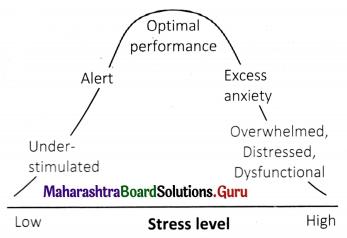
Question (iii).
Explain the internal and external stressors with examples.
Answer:
- Internal stressors: These are stressors within us and we have to deal with them ourselves, e.g. a paralyzed individual may not be able to do any work which can lead to stress.
- External stressors: These are stressors from the outside environment which result in frustration, e.g. forgetting the PIN while using an ATM machine.
![]()
Question (iv).
What are the effects of hypo stress?
Answer:
Hypo stress is an insufficient amount of stress which is caused when a person has nothing to do at all. Its effects are as follows:
- It leads to boredom.
- It causes feelings of restlessness.
- People become demotivated and unenthusiastic.
Question (v).
Why the approach-avoidance conflict is most difficult to resolve?
Answer:
Approach-Avoidance conflict is most difficult to resolve because:
- An individual is attracted and repelled by the same goal.
- There is only one goal that has both positive and negative values.
- An individual has no choice. He has to accept the consequences of his choice.
3. Compare and contrast with examples.
Question 1.
Eustress and Distress
Answer:
- Eustress means good or a positive form of stress having a beneficial effect on health, motivation, performance, and emotional well-being (Merriam Webster). Conversely, distress is a negative type of stress and is experienced when the normal routine of an individual is constantly altered and adjusted.
- e.g. After a lot of practice, Amit is ready for his football match. He will experience eustress. e.g. Ajay is fired from his job and is not able to find a job anywhere else. He will experience distress.
Question 2.
Hypo stress and Hyper stress
Answer:
- Hypo stress is an insufficient amount of stress and is caused when an individual has nothing to do at all while hyper stress is caused due to extremely pressurizing conditions.
- Hypo-stress makes an individual demotivated, unenthusiastic, and restless while in case of hyper stress, a person may panic and engage in exaggerated reactions leading to frustration and agitation.
- e.g. When one cannot use his full potential in a job, it results in hypo stress. e.g. When one is stuck in a traffic jam, has forgotten to carry important documents for the meeting, and is late to work, it results in hyper stress.
Question 3.
Emotion-focused coping and Problem-focused coping
Answer:
- In emotion-focused coping, an individual focuses on the emotions resulting from stress. On the other hand, in problem-focused coping, an individual focuses effort on the problem and accepts the reality as it is.
- e.g. Nilesh tries to avoid negative emotions by keeping his mind stable with meditation or stuff down negative emotions by fighting with others. This is emotion-focused coping, e.g. When a chef gets negative feedback about a dish he has made, he makes more efforts to improvise the dish. This is problem-focused coping.
![]()
Question 4.
Attack and Withdrawal
Answer:
- In an attack strategy, an individual directly attacks the conflict as a direct way to resolve it. On the other hand, in withdrawal strategy, an individual may indulge in beating retreat or withdraw from the goal when he cannot achieve it after putting in his best efforts.
- e.g. When an employee wants a promotion and gets negative feedback on his presentation, he tries to improvise his presentation, learns, and asks for help from his seniors to get promoted (attack), e.g. If the employee is not promoted due to flaws in his presentation, he may leave the job altogether (withdrawal).
Question 5.
Compromise and Withdrawal
Answer:
- In compromise strategy, a person readjusts the goal to the nearest possible goal when he cannot achieve the original goal due to lack of capacity. Alternatively, in withdrawal strategy, a person may indulge in beating retreat or withdraw from the goal when he cannot achieve it after putting in his best efforts.
- e.g. An individual who wanted to become an orthopedic surgeon but could not manage to get admission. So, he took up physiotherapy as a career (compromise), e.g. On not getting admission, the individual may give up the field of medicine and his dream of becoming a doctor and pursue something else (withdrawal).
Question 6.
Projection and Rationalization
Answer:
- Projection involves the individual attributing his own thoughts, feelings, and motives to another person while rationalization occurs when a person attempts to explain or create excuses for his failure. By doing so, the individual avoids accepting the true cause of his failure.
- e.g. when a student has not studied for the exam, he may say that the questions were out of the syllabus (projection), e.g. when a person cannot afford a car, he says that cars are not environment friendly (rationalization).
4(1). What are the possible consequences?
Question (a).
Mehul is sufficiently prepared for his exams but feels tremendously stressed.
Answer:
- It is possible that Mehul might panic and go blank while writing the paper.
- So, Mehul should be confident about what he has studied and hope that he does well in the exam.
Question (b).
Sujata has nothing to do as her husband is a multimillionaire, nor does she have any hobby.
Answer:
- Sujata is facing hypo-stress as she has nothing to do at all. It is possible that she feels very bored, demotivated, unenthusiastic, and restless.
- In order to feel good about herself, she should pursue something she likes and diverts her mind.
![]()
Question (c).
Kalpesh sets his goals similar to his top ranker brother, without considering his ability.
Answer:
- Kalpesh will feel very stressed if he does not have the level of intelligence or ability required to meet the goals. It would lead to anger and frustration.
- There is also a possibility that he would feel extremely demotivated and leave the goal permanently.
Question (d).
Mohsin resorts to blaming others every time he fails.
Answer:
- Mohsin is using the defense mechanism called projection to protect his ego from shattering. But at some point, he will have to face the reality.
- At such a point in time, his ego would no longer be protected and may lead to mental health problems.
4(2). Identify the defense mechanism used in each of the following examples.
Question (a).
Rahul who is interested in football was not selected for the college football team. He says he never wanted to be a part of the college football team.
Answer:
Displacement
Question (b).
Vipasha comes from an extremely poor family. She sleeps into imagining herself driving her own car.
Answer:
Sublimation
Question (c).
Arnav got a scolding by his teacher and he could not answer back. After coming home, he started beating his younger brother for no reason.
Answer:
Daydreaming
![]()
Question (d).
Ajay loved a girl who turned down his proposal. Later he became a successful composer.
Answer:
Rationalization
4(3). Identify the conflict of motive that is experienced by the person in the following situation.
Question (a).
Rashmi has got a promotion in her company and so has to go abroad. She wants to take this opportunity but at the same time, she is not willing to leave her parents.
Answer:
Approach – Avoidance conflict
Question (b).
Yogesh has got selected by two reputed companies at the same time and both are his dream offers.
Answer:
Approach – Approach conflict
Question (c).
Julius doesn’t want to go to a wedding ceremony with his family as it’s too boring there but doesn’t want to stay alone at the same time.
Answer:
Avoidance – Avoidance conflict
Question (d).
Shanaya is very conscious about her figure, but she is also very tempted to eat sweets.
Answer:
Approach – Avoidance conflict
Question (e).
Vishal has got the invitation from his school friends for a reunion party on the same day as his fresher’s party in his college.
Answer:
Double Approach – Avoidance conflict
![]()
5. Write short notes in 35-40 words each.
Question 1.
Types of stress
Answer:
- Hypo stress: It is caused when one has nothing to do at all.
- Hyper stress: It is caused due to extremely pressurizing conditions.
- Eustress: It is a positive form of stress.
- Distress: It is a negative type of stress. Two types of distress are:
- Acute distress: Intense and short-term
- Chronic distress: Long-lasting and recurrent
Question 2.
Relationship between stress level and performance
Answer:
- When stress is too little or when it exceeds the limits, it deteriorates performance.
- Optimum performance can be achieved only under moderate stress.
Question 3.
Direct ways to cope with stress
Answer:
- Attack: An individual directly attacks the conflict to resolve it.
- Compromise: If a person cannot achieve the goal, he may readjust the goal to the nearest possible goal.
- Withdrawal: When a person cannot achieve a goal after putting in their best efforts, he may withdraw from the goal altogether.
Question 4.
Defense mechanisms
Answer:
- Defense mechanisms are an indirect way to combat stress.
- They are unconscious strategies used to protect the ego from breaking due to unacceptable/harsh reality. It functions as a shock absorber.
6. Answer the following questions in 150-200 words each.
Question 1.
Give the definition of stress and explain different types of stress.
Answer:
According to Richard Lazarus, ‘stress is a feeling experienced when an individual feels that the demands exceed the personal and social resources an individual is able to mobilize’.
The types of stress are as follows:
- Hypo stress: It is an insufficient amount of stress and may be due to work under load. When people have nothing to do, they get bored and if this feeling persists for a longer time, it results in hypo-stress. People with hypo-stress are demotivated, unenthusiastic, and restless.
- Hyper stress: It is a result of extremely pressurizing conditions. Due to hyper stress, a person may experience panic attacks and may engage in exaggerated reactions like throwing temper tantrums. It leads to frustration and agitation.
- Eustress: It is a good form of stress which has a positive effect on health, motivation, performance, and emotional well-being. It is a state when an individual is excited, determined, inspired, energized, and ready to go. While experiencing eustress, the body is temporarily and intensely flooded with hormones like oxytocin and dopamine.
- Distress: It is a negative type of stress. An individual experiences it when the normal routine is constantly adjusted and altered. While experiencing distress, our body is flooded with emergency response hormones like adrenaline and cortisol. Distress is divided into two types:
- Acute distress: It is intense, short-term negative stress.
- Chronic distress: It is a long-lasting, recurrent negative stress.
![]()
Question 2.
What is meant by conflict of motives? Explain the different types of conflicts with examples. Illustrate your answer with appropriate figures.
Answer:
Conflict of motives refers to the clash between two or more equally strong and incompatible motives occurring at the same time that compels an individual to make a choice, which in turn leads to stress.
The types of conflict are:
i. Approach-Approach conflict: There is a conflict between two positive and attractive goals. The decision will depend on the attractiveness of the goal and its valence may change, e.g. Bhoomi wants to take up two courses but they are both scheduled at the same time.

ii. Avoidance-Avoidance conflict: The conflict involves two goals with negative values. An individual is forced to make a choice between two negative and unattractive goals, e.g. Ritu must work at a job which she dislikes, or else she must remain unemployed.

iii. Approach-Avoidance conflict: There is only one goal and it has positive as well as a negative value. This type of conflict is very difficult to resolve. There are three possible reactions in such a situation: give importance to a positive value, be cautious about the negative value and leave the goal altogether, e.g. Aryan receives a letter of acceptance from a college of his choice but it is very expensive.
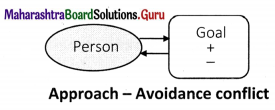
iv. Double Approach-Avoidance conflict: An individual faces conflict between two or more goals that have an equal positive or negative value. However, an individual is always disappointed with the choice he makes as he has to lose the other goal, e.g. Richa has to choose between two boys for marriage. One is handsome but boring. The other one is fun but not good-looking.
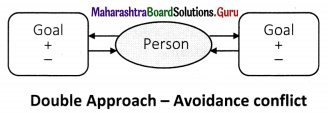
Activities
[Note: The answers to activities will be very subjective. The answers provided are for reference. Students are expected to perform these activities on their own.]
Activity 2 (Textbook Page No. 61)
Look at the following examples of stress. Try to find a pattern in them and make a definition of stress for yourself.
i. Meena needs fees for her higher education. But her father has less money than required. He feels very stressed.
ii. Rashid is late for an appointment and he is stuck up in a traffic jam. He is stressed about reaching on time.
iii. Parminder is supposed to make a model for the Science examination which is not working. Parminder feels stressed.
Answer:
Stress is the body’s reaction to any change that requires adjustments. It refers to a situation in which an individual’s expectations cannot be fulfilled due to a lack of resources.
![]()
Activity 6 (Textbook Page No. 66)
Try to find examples of the given types of conflicts in your life or around you. How are these types of conflicts resolved? Are they? How does one deal with the resulting stress?
Answer:
Everyone faces all types of conflicts at one time or the other. I have to choose between two of my favourite destinations for the upcoming vacations. My uncle loves to eat sweets but he is a diabetic and so, he is always thinking about how to resolve this conflict. My younger brother has to choose between doing homework and going to tuition. He dislikes both.
All these types of conflicts are difficult to resolve but solving them is also very important. Everybody deals with the resulting stress in different ways. Ideally, we should weigh the pros and cons of every situation and then come to a conclusion.
Class 11 Psychology Textbook Solutions Digest
- Psychology Class 11 Chapter 1 Question Answers
- Psychology Class 11 Chapter 2 Question Answers
- Psychology Class 11 Chapter 3 Question Answers
- Psychology Class 11 Chapter 4 Question Answers
- Psychology Class 11 Chapter 5 Question Answers
- Psychology Class 11 Chapter 6 Question Answers
- Psychology Class 11 Chapter 7 Question Answers
- Psychology Class 11 Chapter 8 Question Answers
